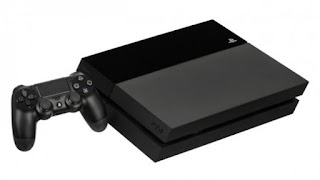With the Sony PlayStation NEO, AMD may have forced Sony’s hand
Click Here! - TOP VENDOR ZCODE : GET UPTO 300 USD PER SALE ! SELLS LIKE CANDY !!
Click Here! - TOP VENDOR ZCODE : GET UPTO 300 USD PER SALE ! SELLS LIKE CANDY !!
 |
| sony playstation 4 |
Sony’s decision to build the PS4.5 a.k.a. the PlayStation NEO may have been precipitated by AMD’s decision to shift to a 14nm manufacturing process. The current PlayStation 4 (PS4) uses chips based on AMD’s 28nm manufacturing process, which is now very old and comparatively inefficient. It’s also more expensive to manufacture today.
At the expense of oversimplifying the situation, the manufacturing process mentioned above refers to the size of the transistor in a computer chip. As a rule of thumb, the larger the manufacturing process, the more inefficient the transistor, owing to losses due to heat and other sources.
A shift to a 14nm process for AMD’s new chips means that their next generation chips, codenamed ‘Polaris’, will be much more efficient and also more powerful. AMD’s decision to shift to a 14nm process means that Sony, and Microsoft, which are dependent on AMD’s 28nm-based APUs to power their consoles, will have to rely on an older, more expensive manufacturing technique in order to keep their consoles in production.
Normally, a shift in manufacturing process would mean that the likes of Sony would just shrink their design to suit the new process. However, since the current generation of consoles are based on the x86 architecture (the technology that powers your fully-upgradeable PC), they can be upgraded without alienating their existing audience and ushering in a new console generation.
Sony apparently had the option of either getting AMD to continue to build the current generation of PS4 chips by setting up a dedicated production line or just going with the flow and switching to AMD’s Polaris architecture. The former would have resulted in an increase in production costs and the latter a significant increase in performance.
As it happens, Sony is very much in need of that extra processing oomph if it expects its PlayStation VR to succeed. The PS4 is just barely capable of pushing out 60fps at 1080p, and that too not very consistently. The PS VR would require a minimum of 90fps at the same resolution for acceptable performance.
For gamers, the shift is a boon. AMD’s Polaris architecture is based on a smaller manufacturing process, yes, but the architecture has also been updated. It’s now far more efficient, can handle 4K content with aplomb and will offer a much needed boost to overall performance and frame-rate.
AMD, AMD Polaris, AMD Zen, PlayStation 4, PlayStation NEO, PlayStation VR, PS4, PS4.5,PS4K, PSVR, Sony
No comments:
Post a Comment